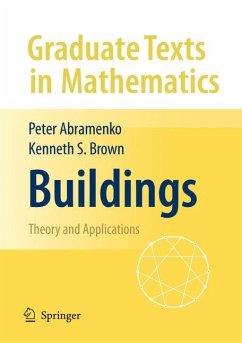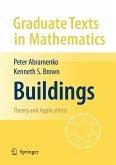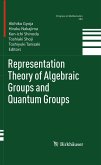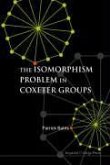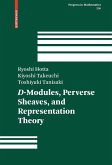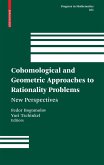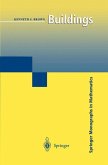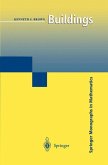This text started out as a revised version of Buildings by the second-named author [53], but it has grown into a much more voluminous book. The earlier book was intended to give a short, friendly, elementary introduction to theory, accessible to readers with a minimal background.Moreover, it approached buildings from only one point of view, sometimes called the "old-fashioned" approach: A building is a simplicial complex with certain properties. The current book includes all the material of the earlier one, but we have added a lot. In particular, we have included the "modern" (or "W-metric") approach to buildings, which looks quite different from the old-fashioned approach but is equivalent to it. This has become increasingly important in the theory and applications of buildings. We have also added a thorough treatment of the Moufang property, which occupies two chapters. And we have added many new exercises and illustrations. Some of the exercises have hints or solutions in the back of the book. A more extensive set of solutions is available in a separate solutions manual, which may be obtained from Springer's Mathematics Editorial Department. We have tried to add the new material in such a way that readers who are content with the old-fashioned approach can still get an elementary treatment of it by reading selected chapters or sections. In particular, many readers will want to omit the optional sections (marked with a star). The introduction below provides more detailed guidance to the reader.
American Mathematical Society Mathematical Reviews MR2439729: "The book under review ... is the first encyclopedic treatment of buildings made available in the literature, so that with writing this book the authors manage to close a serious gap in the mathematical literature: the non-existence of an easily accessible reference for buildings beyond an introduction. In their introduction the authors state that it is their ``goal in this book to treat buildings from all three ... points of view [via the simplicial, the combinatorial, and the metric approach]. The various approaches complement one another and are useful. On the other hand, [the authors] recognize that some readers may prefer one particular viewpoint. [The authors] have therefore tried to create more than one path through the book so that, for example, the reader interested only in the combinatorial approach can learn the basics without having to spend too much time studying buildings as simplicial complexes.'' In the reviewer's opinion, the authors perfectly reach this goal and, moreover, manage to show that the theory of buildings and their applications are active, thriving, exciting and beautiful areas of mathematics. This book is very well written. The reviewer is sure that it will become a standard reference for buildings and remain one for a very long time. ... The main advantages of the combinatorial approach to buildings are that it is elementary and abstract and, hence, easily accessible. Since the simplicial and combinatorial approaches are equivalent..., one can always work with the one which is more suitable for one's own problems or more appealing to one's own taste. It is indeed one of the great achievements of this book to introduce both concepts simultaneously and to combine them in a natural way. ... Chapter 8 is extremely valuable for students and researchers interested in the theory of twin buildings, as it makes the theory ... easily accessible. It is particularly important for the mathematical community that the folklore Theorem 8.27 has finally been recorded. ... Altogether, the book under review is a wonderful piece of work that will have many enthusiastic readers."
From the reviews:
American Mathematical Society Mathematical Reviews MR2439729:
"The book under review ... is the first encyclopedic treatment of buildings made available in the literature, so that with writing this book the authors manage to close a serious gap in the mathematical literature: the non-existence of an easily accessible reference for buildings beyond an introduction.
In their introduction the authors state that it is their ``goal in this book to treat buildings from all three ... points of view [via the simplicial, the combinatorial, and the metric approach]. The various approaches complement one another and are useful. On the other hand, [the authors] recognize that some readers may prefer one particular viewpoint. [The authors] have therefore tried to create more than one path through the book so that, for example, the reader interested only in the combinatorial approach can learn the basics without having to spend too much time studying buildings as simplicial complexes.'' In the reviewer's opinion, the authors perfectly reach this goal and, moreover, manage to show that the theory of buildings and their applications are active, thriving, exciting and beautiful areas of mathematics. This book is very well written. The reviewer is sure that it will become a standard reference for buildings and remain one for a very long time.
... The main advantages of the combinatorial approach to buildings are that it is elementary and abstract and, hence, easily accessible. Since the simplicial and combinatorial approaches are equivalent..., one can always work with the one which is more suitable for one's own problems or more appealing to one's own taste. It is indeed one of the great achievements of this book to introduce both concepts simultaneously and to combine them in a natural way.
... Chapter 8 is extremely valuable for students and researchers interested in the theory of twin buildings, as it makes the theory ... easily accessible. It is particularly important for the mathematical community that the folklore Theorem 8.27 has finally been recorded.
... Altogether, the book under review is a wonderful piece of work that will have many enthusiastic readers." This book is the first one which presents all of the different approaches to buildings alongside one another, and it does so in an accessible yet thorough manner which should prove extremely useful to anyone wishing to learn more about this interesting area of mathematics. The goal of presenting this introductory material in one place would be laudable enough. ... this book is an extremely valuable addition to the mathematical literature. ... it should also be an essential resource for experts in the area." (Michael Bate, Zentralblatt MATH, Vol. 1214, 2011)
American Mathematical Society Mathematical Reviews MR2439729:
"The book under review ... is the first encyclopedic treatment of buildings made available in the literature, so that with writing this book the authors manage to close a serious gap in the mathematical literature: the non-existence of an easily accessible reference for buildings beyond an introduction.
In their introduction the authors state that it is their ``goal in this book to treat buildings from all three ... points of view [via the simplicial, the combinatorial, and the metric approach]. The various approaches complement one another and are useful. On the other hand, [the authors] recognize that some readers may prefer one particular viewpoint. [The authors] have therefore tried to create more than one path through the book so that, for example, the reader interested only in the combinatorial approach can learn the basics without having to spend too much time studying buildings as simplicial complexes.'' In the reviewer's opinion, the authors perfectly reach this goal and, moreover, manage to show that the theory of buildings and their applications are active, thriving, exciting and beautiful areas of mathematics. This book is very well written. The reviewer is sure that it will become a standard reference for buildings and remain one for a very long time.
... The main advantages of the combinatorial approach to buildings are that it is elementary and abstract and, hence, easily accessible. Since the simplicial and combinatorial approaches are equivalent..., one can always work with the one which is more suitable for one's own problems or more appealing to one's own taste. It is indeed one of the great achievements of this book to introduce both concepts simultaneously and to combine them in a natural way.
... Chapter 8 is extremely valuable for students and researchers interested in the theory of twin buildings, as it makes the theory ... easily accessible. It is particularly important for the mathematical community that the folklore Theorem 8.27 has finally been recorded.
... Altogether, the book under review is a wonderful piece of work that will have many enthusiastic readers." This book is the first one which presents all of the different approaches to buildings alongside one another, and it does so in an accessible yet thorough manner which should prove extremely useful to anyone wishing to learn more about this interesting area of mathematics. The goal of presenting this introductory material in one place would be laudable enough. ... this book is an extremely valuable addition to the mathematical literature. ... it should also be an essential resource for experts in the area." (Michael Bate, Zentralblatt MATH, Vol. 1214, 2011)

